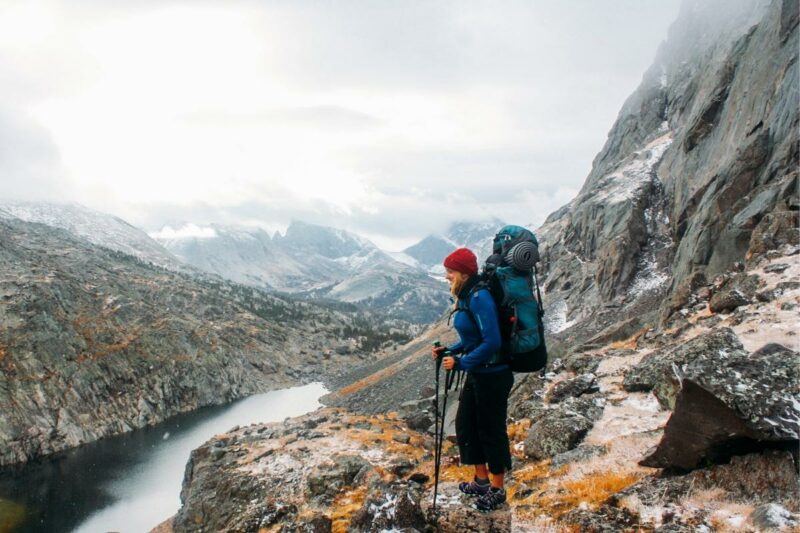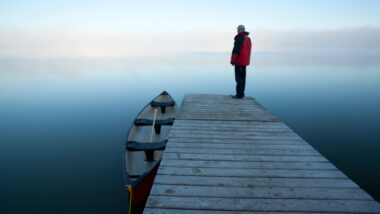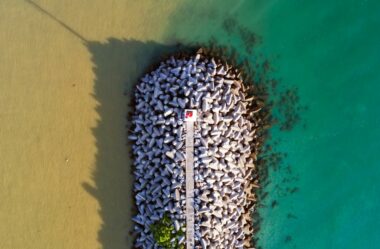Table of Contents Show
These rivers in Wyoming you have to see to believe. And we will tell you all about them in this article. The state may be known for its national parks, but it has some epic waterways worth visiting.
Keep reading to learn which rivers flow through Wyoming that can provide a fun vacation. Let’s get going.
Are There Any Major Rivers in Wyoming?
The three longest rivers in Wyoming are the Snake River, Green River, and North Platte River. The Snake River is 1,078 miles long and is the largest tributary of the Columbia River.
The second-longest is the Green River at 730 miles, a relatively shallow waterway. And the North Platte River is 716 miles long and is a major tributary of the Platte River.

Which River Runs Through Cheyenne, Wyoming?
Crow Creek is a 153-mile creek that runs through Cheyenne, Wyo. While it’s not a major waterway, you can see it as it flows through the city.
You can also hike the Crow Creek trail to take in more of the water and beautiful views. This 5.8-kilometer out and back hike takes you to a stunning waterfall.
Rivers in Wyoming You Have to See to Believe
Let’s take a closer look at rivers in Wyoming that you can visit. They vary in size and accessibility. We share an overview of each and let you know how to get the best view.
Snake River
The Snake River is famous for Lewis and Clark sailing down it between 1804 and 1806 to the Columbia River, which led them to the Pacific Ocean. As a tributary of the Columbia River, the Snake River is 1,078 miles and is the longest river in Wyoming.

Along with its historical significance, it’s famous for rainbow trout and small-mouth bass fishing. You can view the river from several locations.
One of the most beautiful places to access the Snake River is the Teton Point Overlook in Moose, Wyo. With the Tetons as a backdrop, it’s the perfect place for a photo.
Green River
The Green River is the second-longest waterway in Wyoming at 730 miles long. As a major tributary of the Colorado River, it comes from the meltwater of Wyoming’s Wind River Mountains. And it’s Pinedale city’s agricultural lifeline.

Furthermore, the beautiful river is known for fishing and wildlife viewing, like moose, who use it as their water source. With majestic cliff faces within sight of the river, it’s definitely with a visit to capture the 360-degree views.
North Platte River
The North Platte River is a major tributary of the Platte River. And it’s the only floatable river in central Wyoming. Therefore, it has become a fishing destination, and the Wyoming Game and Fishing Department rated it as a blue ribbon fishery.
From Six Mile Gap to the town of Glenrock, you’ll find 150 miles filled with brown and rainbow trout. And the river’s ecosystem and consistent water temperatures make for huge trout and a fun fishing trip.
Laramie River
The Laramie River begins in the Never Summer Mountains in southern Wyoming and is 280 miles long. It’s a tributary of the North Platte River and is a freestone river formed by snowmelt.

Additionally, you’ll find brown trout in the Laramie, some larger than 10 pounds. The river’s name comes from Jacques La Ramie, who worked as a fur trapper along the waterway in the early 19th century.
Sweetwater River
The Sweetwater River is great for brown and rainbow trout fishing. The river lies in a historic mining district of Wyoming with few marked roads. You can access the 238-mile river near Atlantic City, Wyo.
Take the BLM road 512 south from town until you reach a major fork about 2.5 miles in. Then turn left on road 511 at the fork toward Willie’s Handcart Company monument. Go another 3 miles to a two-track road and follow it to the right or south.
Finally, the road leads you to a bluff overlooking the Sweetwater River. You can get to the river by continuing down the hill, but four-wheel drive is recommended.
Popo Agie River
The Popo Agie River in Wyoming is 54 miles long. It’s known for disappearing into Sinks Canyon through underground passages of the limestone sink. And when the river reappears, it continues to Wind River and eventually meets up with the Yellowstone River.

The Yellowstone then connects to the Missouri River and eventually flows down the Mississippi into the Gulf of Mexico. Sinks Canyon in central Wyoming is also a great place to view the river and see some wildlife.
Keep in Mind: If you’re planning to visit the national parks in Wyoming, here’s what you need to know!
The Wind River
The Wind River is the name of the upper section of the Bighorn River. It flows for 185 miles through one of the most beautiful parts of Wyoming. It’s a must-see with views of majestic cliffs, big horn sheep, and more.
Additionally, it lies in a popular area for hiking, mountain biking, camping, rock climbing, and horseback riding. And in the winter you can enjoy cross-country skiing or snowshoeing.
Bighorn River
The 461-mile-long Bighorn River is a tributary of the Yellowstone River. It’s popular for fly fishing and is one of Wyoming’s Premier Blue Ribbon trout rivers.
Moreover, Thermopolis, Wyo., is a good spot for fishing and has a tailwater fishery. You’ll find brown, rainbow, and cutthroat trout in the Bighorn River. Additionally, people love floating and fishing in the river or soaking in the nearby thermal pools.
Tongue River
The Tongue River is also a tributary of the Yellowstone River. It’s 265 miles long and flows through Wyoming and Montana. Don’t miss this river as it runs through meadows and vast landscapes.

And anglers will love it for its brown and rainbow trout. Visit the river at the Sheridan County Picnic Ground near Dayton, Wyo.
Powder River
The 486-mile-long Powder River eventually joins with the Yellowstone River in Montana. The Powder River Basin region is known for producing the most coal in the United States.
Its region also includes the Black Thunder Coal Mine. This surface coal mine contains one of the largest deposits of coal in the world. It opened in 1977 and produces just under 10% of all coal in the country.
Keep in Mind: While in Wyoming, sit back and relax in one of these Hot Springs!
Shoshone River
The Shoshone River in northern Wyoming is perfect for fly fishing. You can visit and fish from this 100-mile river in Cody, Wyo., and enjoy camping and geological sites nearby.
Additionally, the town is a popular destination and a way to see one of the beautiful rivers in Wyoming. It joins up with the Bighorn River in Kane at the Bighorn Canyon National Recreation Area.
Are Rivers in Wyoming Worth Seeing Up Close?
Rivers in Wyoming are worth seeing up close. They’re some of the most beautiful waterways in the country. These unique waterways flow through serene settings and offer amazing recreation.
Feel amazed by the mountain backdrops, canyons, and majestic fields full of wildlife. We highly recommend checking out some of the rivers in Wyoming on your next adventure in the state.






